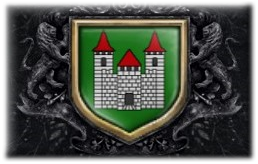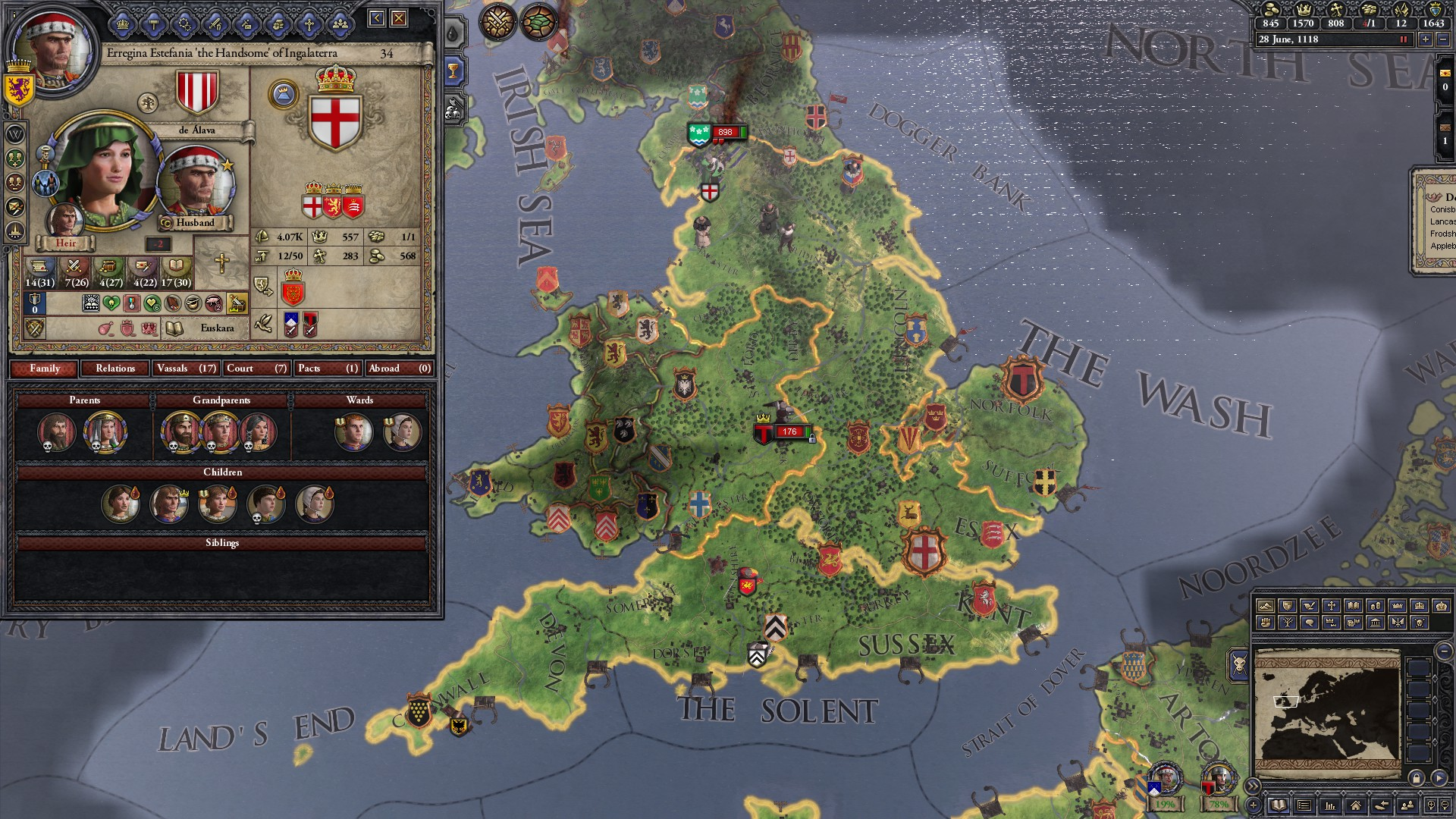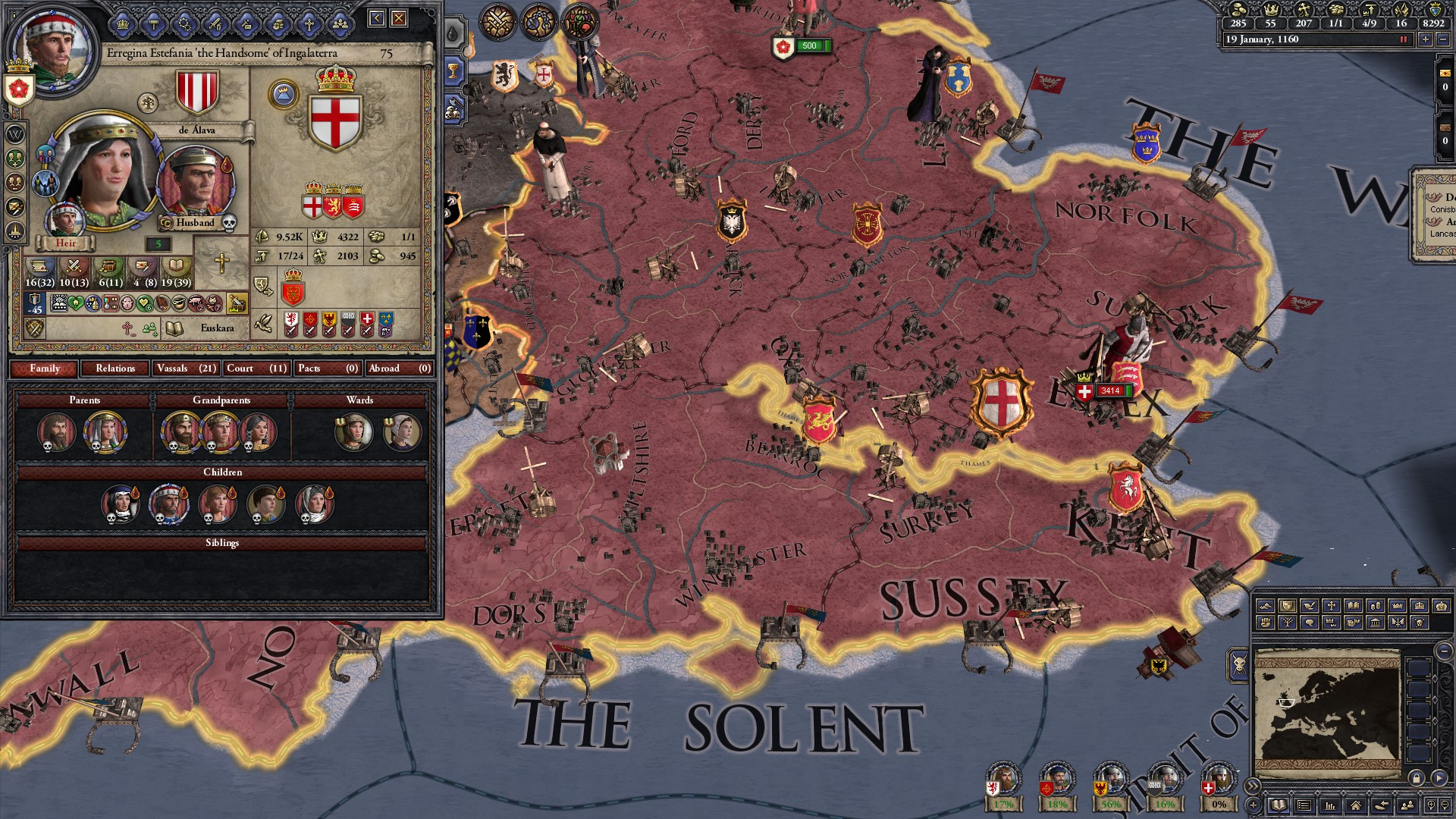A Crusader Kings 2 AAR

Wars of House Rocherfort

Wars of House Rocherfort
Gender Equality (None)
Secret Religious Cult (None)
Devil Worshipers (None)
Supernatural Events (None)
Absurd Events (None)
Culture Conversion (Slower)
Religious Conversion Speed (Slower)
Raiding (Unrestricted)
Matrilineal Marriages (None)
Demesne Size (Quartered)
Exclave Independence mod: Sea Connections (One sea zone)
Secret Religious Cult (None)
Devil Worshipers (None)
Supernatural Events (None)
Absurd Events (None)
Culture Conversion (Slower)
Religious Conversion Speed (Slower)
Raiding (Unrestricted)
Matrilineal Marriages (None)
Demesne Size (Quartered)
Exclave Independence mod: Sea Connections (One sea zone)
As you can see, I disabled several events such as becoming immortal, bears, wolf boys, children of the Devil, as well as Satanic society itself, to make the game more realistic and historical in these aspects. I left the speed of conversion of religion and culture on slow, in order to avoid extravagances with entire regions with different cultures, besides I find it kind of unrealistic to drastically change the culture of a region to the Middle Ages.
The most important point was for Demesne Size, that count of how many counties of your own you can have, I found this choice very interesting, there are some good things, like it increases the politics within the kingdoms a lot, it is very much in line with feudalism, before to have a super Duchy with all the earldoms for the Duke, now in the beginning a great Duchy would have a very difficult life, as it would have to have many vassal counts. Also, this way the counties evolve better, because for example when being king and having 5 counties, it is very difficult to evolve more than 2, while the other 3 are left behind, this way these other counties would have counts that would have more possibility to evolve them. Also, the trade off between laws is better, as it is now necessary to have a low crown power to have one more county that you can have, further improving the issue of feudalism.
On the Rading issue, I think it's more realistic historically to let everyone raid and loot their neighbors, changing certain numbers in the file would improve, now for example the Caliphate can loot Byzantine lands in Syria, Normans looting Greece, looting Rome, large parts from Italy, and so on.
Matrilineal Marriages leave it off, because I think it's cool to see the history of the kingdoms, see what families that managed to stay in government longer, because without that, it means that having a woman on the throne married to a man from another family means that the title had passed to the other family, so more families achieve prominence in the region through strategic marriages and not just war most of the time.
Prologue
Chapter I
Chapter II
Chapter III
Chapter IV
Chapter V
Chapter VI
Chapter VII
Chapter VIII
Chapter IX
Chapter X
Chapter XI
Chapter XII
Chapter XIII
Chapter XIV
CHapter XV
Chapter XVI
Chapter XVII
Chapter XVIII
Chapter XIX
Chapter XX
Chapter XXI
Chapter XXII
Chapter XXIII
Chapter XXIV
Chapter XXV
Chapter XXVI
Chapter XXVII - FINAL
Chapter I
Chapter II
Chapter III
Chapter IV
Chapter V
Chapter VI
Chapter VII
Chapter VIII
Chapter IX
Chapter X
Chapter XI
Chapter XII
Chapter XIII
Chapter XIV
CHapter XV
Chapter XVI
Chapter XVII
Chapter XVIII
Chapter XIX
Chapter XX
Chapter XXI
Chapter XXII
Chapter XXIII
Chapter XXIV
Chapter XXV
Chapter XXVI
Chapter XXVII - FINAL
Last edited:





































